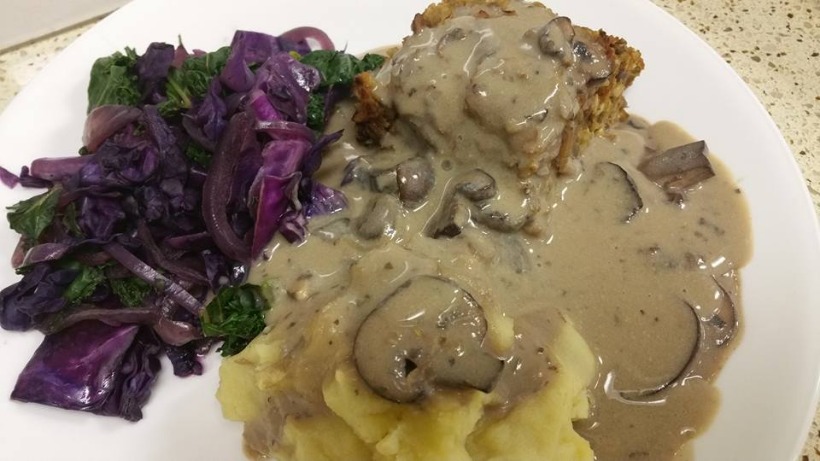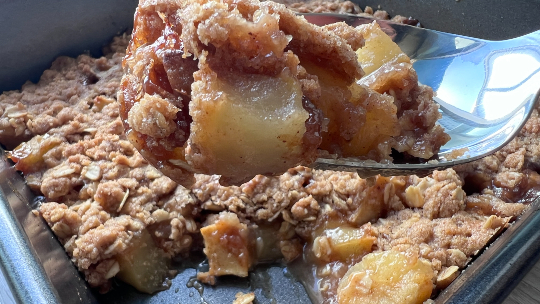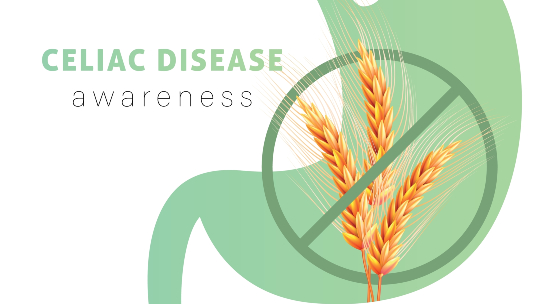Eat right and you’ll be healthy. What does that really mean? Well, for March’s National Nutrition Month, I felt I had to contribute as I just completed the nine-week Dr. Dean Ornish Program for Reversing Heart Disease™. I also interviewed one participant, Stephen, who completed the program right before me.
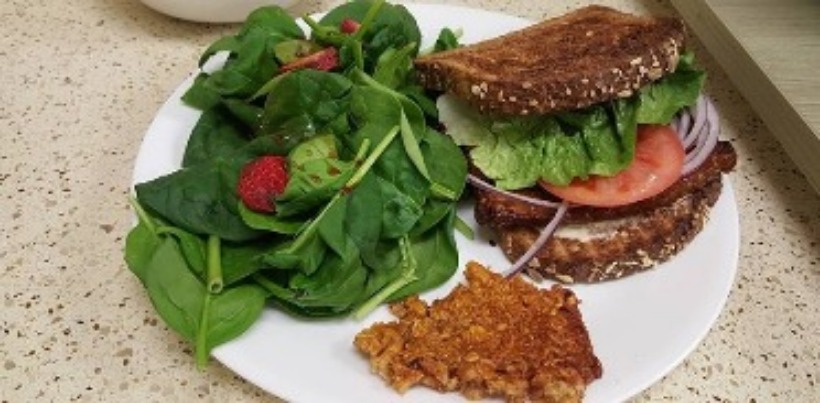 The program has four components and meets twice a week to do an hour each of exercise, yoga/stress management, nutrition (i.e., they fed us!), and group support with others like myself. Most have family members with heart disease and risk factors like high blood pressure, cholesterol or high blood sugar along with others that have personally had a heart attack or stroke. The program claims it can reverse heart disease. Yes, I said that right, reverse!
The program has four components and meets twice a week to do an hour each of exercise, yoga/stress management, nutrition (i.e., they fed us!), and group support with others like myself. Most have family members with heart disease and risk factors like high blood pressure, cholesterol or high blood sugar along with others that have personally had a heart attack or stroke. The program claims it can reverse heart disease. Yes, I said that right, reverse!
At the end of the nine-week program, I lost about 10 pounds, while another in our group lost a dramatic 39 pounds! Stephen, who sat and talked to me about how he did, reported that his cholesterol went down so dramatically that the Ornish program nurse called him stumbling over her words to report the great news. It seems as though everyone had a different result.
The Ornish diet/program is backed by Dr. Dean Ornish and his 37 years of clinical research. What I found refreshing is his belief that daily lifestyle choices can dramatically change your health. These choices can extend your life and reverse damage done by prior missteps.
What is the Ornish diet?
The diet can be easily described as a lacto ovo vegetarian diet. We would eat whole grains, veggies, legumes such as beans and tofu, fruits, egg whites and a few daily dairy products, but no meat. We were told to limit added fats, caffeine, and refined carbohydrates. It’s okay to have a single cup of coffee daily or two cups of green tea, a few nuts here and there and an occasional sweet treat but for the most part you’re avoiding processed junk food and eating more plant-based foods, while cooking more at home. Good news: there is also no limit on the amount of the wholesome food you can eat; you’re just eating till you’re full. 
We were asked to do a daily diet journal and I struggled to meet the six whole grains and three or more vegetable servings a day. I had no problem with the two to four fruit servings and two servings of non-fat diary. The three to five servings of protein were a challenge if you’re not used to having meat every day, but it was nice to try things like baked tofu or silken tofu cocoa pudding in order to fulfill that requirement.
Some in my group struggled to give up meat and one woman stated, “Everyone is starting to look like ginger chicken with sauce on their heads!” I struggled with eliminating simple sugars. The dietitian asked me to at least have “black, natural licorice” the next time I indulged in sugary red whip licorice. As a group, we supported our drastic diet changes and commiserated when we’d cheat. After nine weeks of not entirely following the diet perfectly, I lost half an inch off my waist and two and half inches off my hips. One man in our group lost 11 inches on his waist! I’m “sold” too, permanently adopting a vegetarian or flexitarian lifestyle (eliminating or only on rare occasions eating meat).
This is a hard diet to follow strictly without preparing food, as you are encouraged to eat the most natural foods that are lowest in fat which is not the way most restaurants cook.
Ways a low-fat vegetarian Ornish diet may help
• Decreases blood pressure – Within three weeks of the program, at least three in my group are already off high blood pressure medication. It gets to the point that some are concerned since they’ve never seen blood pressure so low!
• Decreases LDL cholesterol and triglycerides – I had a hard time with the diet portion of the program; I was basically switching from a low-carb, high-fat to a high-carb, low-fat diet. So, I was amazed that at the six week mark I did a cholesterol lab and my total cholesterol went from 202 prior to the program to 151, and my bad cholesterol went down dramatically.
• Decreases stress, improved mental outlook – We are assigned to one-hour of daily yoga and meditation. Several in my program swear that the one-hour tapes that the program has online is the only way they can get a restful night’s sleep. Everyone seems to like the way they feel less sluggish or run down from replacing a high saturated fat diet with this new low-fat one.
• Decreases blood sugar – One member in our group reported an A1C (blood lab that tests your average sugar level over the past three months) that improved from a 10 to a seven after the nine-week program. The nurse at our Ornish program is astonished, as that is a dramatic difference. Another participant went from a seven to a 5.7 which is no longer in the diabetes range.
So, what can you eat?
You’ll eat a lot of whole grains and vegetables. Stephen and I enjoy steel cut oatmeal for breakfast. I like to add some walnuts and bananas while Stephen enjoys powdered low-fat peanut butter. I also like to add two egg whites on the side.
For lunch, I usually enjoy a salad with non-fat dressing or vinegar, or a veggie burger on whole wheat with mustard. Stephen also learned to love non-fat balsamic dressing. He said if you have a craving it can be really easy to satisfy it if you cook at home. He makes a fat-free cheese and sour cream quesadilla with some salsa for a quick Mexican lunch or he’ll visit a local health-food store for a brown rice, veggie burrito if he’s busy. He states that we need to convince more people to take on this program so more restaurants will cook with a lot less oil. We both dream of the day when someone makes an “Ornish friendly” lunch wagon. 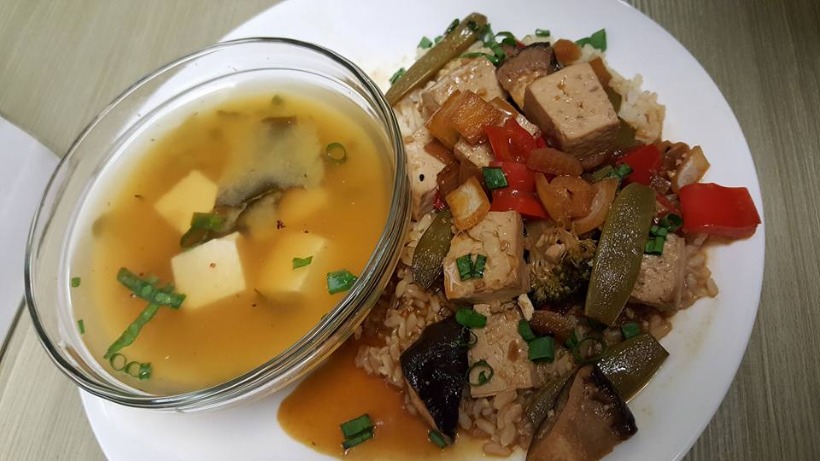
For dinner, I tried Ornish recipes that my family sometimes loved, sometimes passed on. I really liked the hummus recipe since it had all the taste of the hummus I buy at the market but with a fraction of the fat. I also enjoy having veggie spaghetti dishes as I’m a pasta lover. I’ve tried new pasta made from beans instead of the usual whole wheat ones I pick up. I also love the new bean recipes I’ve tried out like the lentil stew and lentil loaf.
Could the Ornish diet be right for you?
Part of the Ornish program that makes the diet so successful is the support from others to make drastic changes. Stephen calls his cohort a “group of heroes” that he relies on for support and they meet monthly usually to go for a walk. He lost a total of 15 to 20 pounds over the nine-week program and was shocked at how he ate a lot and never really felt very hungry.
I ask Stephen what advice he had for others that cringe when you say you’re trying a low-fat, vegetarian diet. “Tell them to just go check it out,” he said. You can drop out after a few weeks, but he’s betting most will be in love with the classes and the quality support from the staff.
Stephen has also tried the low-carb, high-fat diet and found that he never felt very well, even when his blood sugar levels were ok, he was always sluggish and tired in the morning. He would have leg cramps at night, which he thinks was due to bad circulation. He knows he’s not perfect with sticking to the Ornish diet, but that’s ok. He recalls the passing of a close friend who suffered from diabetes and liver cancer and how this friend would often ask if he wanted to go out for “grease” or fatty Chinese food at a place near work. He said this new diet gave him hope that he could live longer. He thinks anyone could benefit from a diet like this but that some will probably think they can’t do it, when they really could. He wonders if his friend who passed away from liver cancer might have lived longer if she ate better.
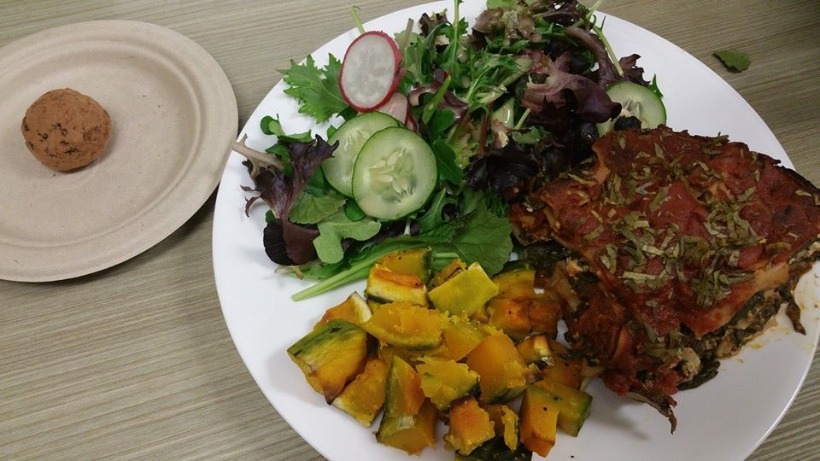 Stephen proudly shows me the Amazon apple corer/slicer that he bought as well as a new microwave oatmeal bowl so that his morning breakfast wouldn’t spill when he grabs it for work. Before the Ornish program, he felt depressed thinking he’d have a shorter lifespan. Now he’s excited thinking it’s never too late to change and he’s motivated to do more. Though he has no cartilage in his knees from playing basketball for years, he now walks daily, knowing how important exercise is to complement your diet. He also started using his country club membership to make use of the exercise machines he used to avoid. He feels better from eating well and wants to be more active. Couldn’t we all have a little more of that in our lives?
Stephen proudly shows me the Amazon apple corer/slicer that he bought as well as a new microwave oatmeal bowl so that his morning breakfast wouldn’t spill when he grabs it for work. Before the Ornish program, he felt depressed thinking he’d have a shorter lifespan. Now he’s excited thinking it’s never too late to change and he’s motivated to do more. Though he has no cartilage in his knees from playing basketball for years, he now walks daily, knowing how important exercise is to complement your diet. He also started using his country club membership to make use of the exercise machines he used to avoid. He feels better from eating well and wants to be more active. Couldn’t we all have a little more of that in our lives?
For more information or to get involved in the Ornish program, call Ekahi Healthcare Center at 777-4001 or 948-9500 or Hawaii Pacific Health at 522-4114.
